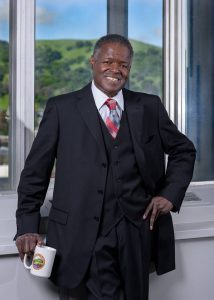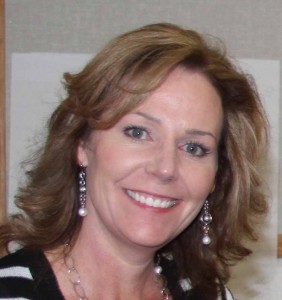Supervisor Glover offers a July 4th message – Reviving the American Dream
Tuesday, July 3rd, 2018
Federal Glover from his Facebook page.
By Federal Glover
As we celebrate July 4th, 2018, Americans stand at a crossroads: do we stand up for those ideals our founding fathers put before us in the Constitution or do we our head down a path that continues to erode the institutions and values that Americans have held for 242 years.
Over the past 18 months, our country has been undergoing a sea change that is remaking the way the world sees us and – more importantly — the way we see ourselves.
This Fourth of July, I almost don’t recognize this country anymore.
The America I knew growing up in Pittsburg was a land of opportunity that allowed a laborer from Mississippi to find a well-paying, blue collar job in the steel mill, buy a car and home and allowed our family to live in relative comfort and security. There was opportunity here. There was hope. We dreamed about a better country and the possibility of Martin Luther King’s Dream of worshipping and living in a land and time when we were judged by the content of our character – not by the color of our skin.
I was fortunate enough to go to school in a city where I had classmates from all around the globe.
We were not isolated from the events that were happening in other parts of the United States. We kept tabs of what was happening in Selma, in Memphis and other parts of the South. Many African American families in town still had relatives in those far away places where history was being written.
Still, those events seemed far away. My best friend was Italian American. We grew up eating at the New Mecca Restaurant, pizza from Carlos’ Pizzeria and hamburgers from The Pirate drive-in. We expanded our taste buds to include lumpia and adobo cooked by our Filipino friends’ mothers and grandmothers. We bought groceries from the market a few blocks away which was owned by a Chinese American family.
As a member of the Pittsburg High School football team, my teammates were made up of a multitude of nationalities from families that had roots in Italy, Greece, Great Britain, the Philippines, Ireland, Mexico and, of course, Mississippi, Alabama, Georgia and Louisiana.
Even when a major retailer was picketed in downtown Pittsburg for not hiring African Americans and King’s shocking assassination broke the peace and calm of our city, the residents and political leaders came together to examine the city and how it could weather the violence that hit other U.S. cities.
Even with the civil rights battle at our doorstep, our community found a way. Change was in the air. It didn’t happen overnight and we had obstacles to overcome, but we had hope. Our dreams – our common dreams — were still intact.
Today, that hope is withering away. Our dreams seem to be fading away. The gains and progress made over the last 60 years is in serious danger. The foundations that made our country strong is more fragile and the beacon of freedom and light for people throughout the world has grown dim.
Refugees who believed in the Statue of Liberty’s “send me your tired, your poor, your wretched refuse,” are being treated like criminals; the needs of our planet seem to taking second place to need for profit; more obstacles are being placed in front of voters; corporate profits are not trickling down to the workers who toil for 20th Century wages shrinking our great middle class; home ownership –- a critical part of the American Dream – is out of reach for most people; the unregulated proliferation of guns has made our streets more dangerous; and the re-emergence of blatant racism threatens to destroy our civil society.
Most disheartening, our Congress, instead of acting as balance to the extreme policies coming from the current administration, has succumbed to the fear of losing an election instead of standing on principle.
For those who might want to give up hope and let cynicism replace our dreams, there are signs that that the American Dream is still alive.
I am heartened by the renewed vigor and interest being displayed by our neighbors, local leaders and government representatives. Instead of giving up, they are injecting new energy and new blood into our communities.
The marches and demonstrations in behalf of women, science, LGBTQ, truth, immigrants and against racism have inspired a new generation of activism that we haven’t seen since the 1960s.
Young people – inspired by high schoolers who have seen their classmates gunned down on campus – have launched a movement to hopefully not only make their campuses safer, but to make our greater society safer and saner. As they grow into adulthood and assume their place in our society, there is hope.
People are not content with speeches and marches in the streets, they are taking their principles into the voting booth and into the halls of our capitols and city council chambers.
Ordinary people who were once content to let the status quo play itself out, are snapping out of their lethargy and are stepping up to the plate. New community groups are springing up made up or our neighbors, who might not want to run for public office, but are willing to make the phone calls, send the e-mails and knock on doors and are creating a wellspring of change in our cities and county.
I’ve seen the first stirrings of renewed activism myself when a group of middle-schoolers in Bay Point went up against the political might and influence of the alcohol lobby to limit sales of alcoholic beverages in their community. We saw it again on June 5 when Bay Area voters passed a measure to improve our transportation system and San Francisco voters spurned the lies and misleading commercials of the tobacco industry to pass a measure limiting tobacco sales in their city.
The words of Bob Dylan, “The times, they are a-changing!” suddenly have found a new audience. People are beginning to believe they can make a difference again. As stated by that great statesman Abraham Lincoln: That “government of the people, by the people, for the people, shall not perish from the Earth.” This is the American Dream.
Happy July Fourth! Celebrate in safety and give thanks that we live in this great country where the possible is … well, possible … for everybody.
Glover represents District 5 which includes portions of Antioch on the Contra Costa County Board of Supervisors.





























